If you're a fan of bold flavors and healthy eating, Korean cuisine is the perfect choice for you. With its emphasis on fresh vegetables, lean proteins, and fermented foods, Korean comfort foods in particular are both delicious and nutritious.
I’ve compiled a mouthwatering list of healthy Korean food and drink recipes that will satisfy your taste buds while also being good for your body. From kimchi to bibimbap, these recipes are packed with flavor and nutrients that will surely leave you feeling full and satisfied. Each one is quick to make and doesn’t require a culinary degree to make.
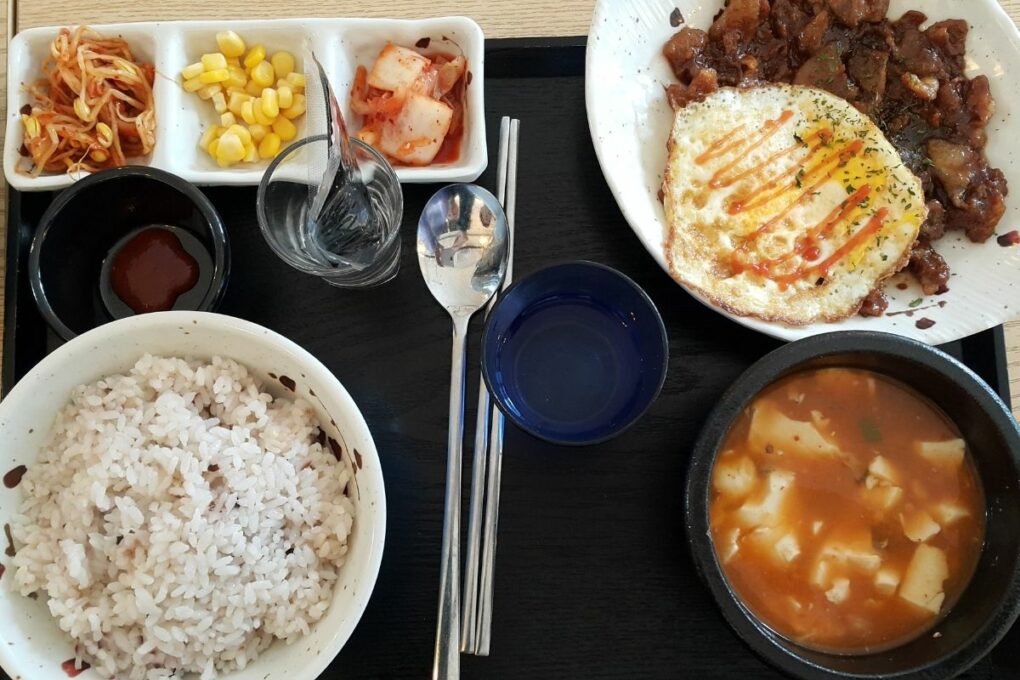
Jump to:
🍜 Healthful Noodle Dishes
Kongguksu (Soy Bean Noodles)
If you're looking for a refreshing and healthy Korean dish, kongguksu is a great option. This dish is made with soybean noodles that are served in a chilled broth made from ground soybeans. It's a popular summer dish and is considered a healthy food in Korea, and it's perfect for those hot days when you want something light and refreshing.
Not only is kongguksu delicious, but it's also a healthy option. The noodles used for this dish are made from soybeans, which means they're gluten-free and a good option for those with wheat allergies.
Soybeans are a great source of protein and fiber, and they're low in fat, plus they’re a good source of vitamins and minerals, including iron, calcium, and potassium.
Kalguksu (Knife Cut Noodles)
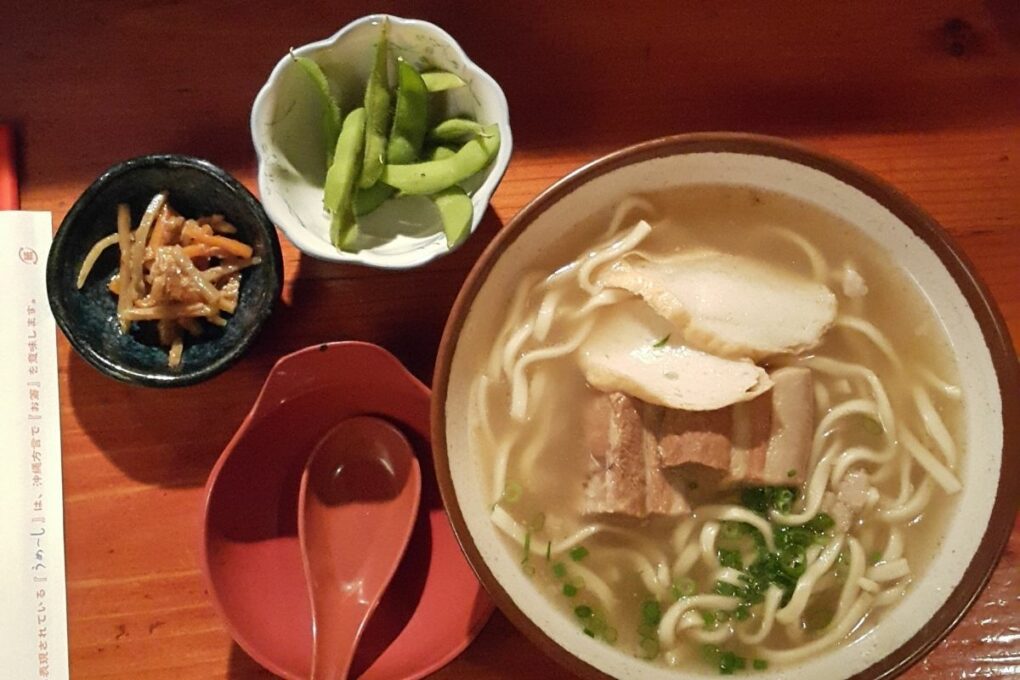
If you're looking for a comforting, hearty meal that's also healthy, look no further than kalguksu. This Korean dish features handmade, knife-cut noodles in a savory broth with vegetables and protein.
Kalguksu is a traditional Korean dish that's not only delicious but also a healthy food option. Its high water and nutrient content make it a satisfying yet light meal with a typical bowl containing only around 400-500 calories.
Additionally, the broth used in kalguksu is often made with bone broth, which is rich in collagen, a nutrient that can help support gut health.
Japchae (Korean Glass Noodles)
Japchae, also known as Korean glass noodles, is a delicious and healthy dish that is perfect for any occasion. Made with a combination of sweet potato starch noodles, vegetables, and a flavorful sauce, this dish is a great way to add some variety to your meals while also getting the nutrients your body needs.
Japchae is also gut-friendly, as it contains ingredients like mushrooms and onions that are known to feed good gut bacteria so as to prevent pathogens from being bale to grow. Plus, it's low in calories, making it a great option if you're watching your weight.
🍲 Superb Korean Soups
Bukeoguk (Dried Pollock Soup)
Bukeoguk, or dried pollock soup, is a staple in Korean cuisine that has been enjoyed for generations. This flavorful and nutritious soup is made with dried pollock, which is known for its health benefits, as well as a variety of vegetables and seasonings.
It's also low in calories and gut-friendly, making it a perfect dish for those who are trying to eat healthily. This is a simple yet delicious soup that's perfect for a cold day as well as a great way to get your daily dose of protein and omega-3 fatty acids.
Sundaeguk (Blood Sausage Soup)
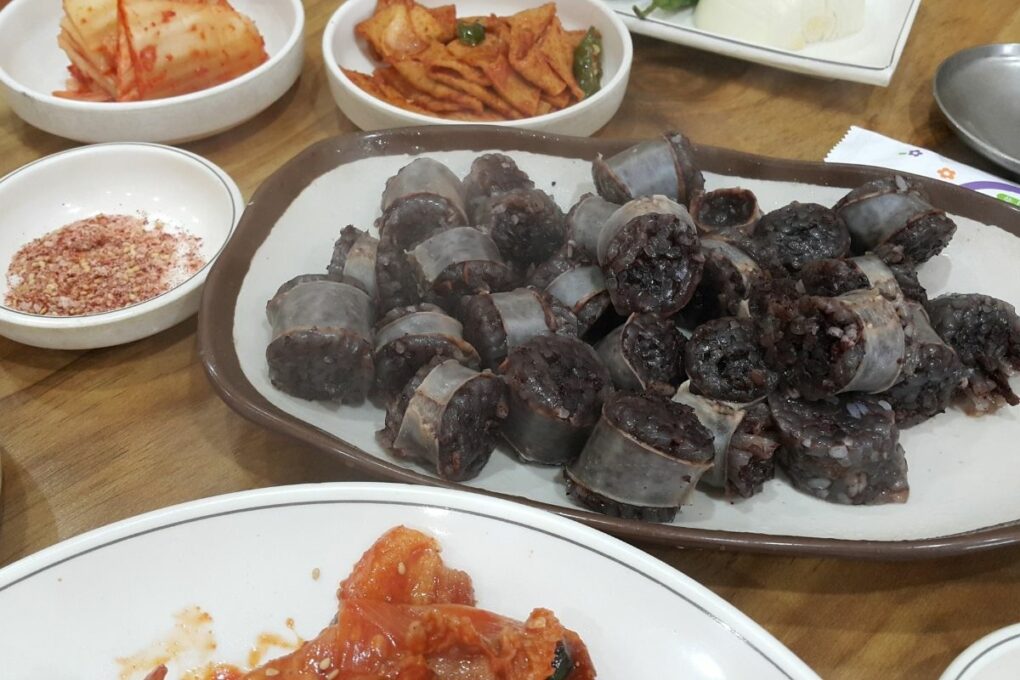
Sundaeguk, also known as blood sausage soup, is a popular Korean dish that is perfect for cold winter days. This hearty soup is made with sundae, a type of sausage made from pig's blood and rice, along with various vegetables and spices.
Sundaeguk is often served with rice and other side dishes, making it a filling and satisfying meal. While it's high in protein and iron, it's also relatively low in calories and fat. If you're looking for a unique and flavorful soup to add to your diet, sundaeguk is definitely worth a try.
Sundubu-jjigae (Spicy Tofu Soup)
Sundubu-jjigae is a delicious and healthy Korean soup that's packed with flavor and nutrients. The star of the dish is soft tofu, which is simmered in a spicy broth along with vegetables like mushrooms, onions, and zucchini.
This classic Korean soup is made with soft tofu, vegetables, and a spicy broth that's packed with flavor, though it's pretty easy to recreate at home with a few key ingredients. If you want to make your soondubu-jjigae even more delicious, there are several tips you can follow.
To start, use high-quality ingredients like fresh tofu and organic vegetables, as they will provide the best flavor and nutrition. Additionally, you can adjust the spiciness level of the soup to your liking by adding more or less Korean chili flakes.
If you want to add more protein to the soup, consider including shrimp, clams, or beef. Finally, a great way to add a creamy and delicious addition to the soup is to top it with a cracked egg and some chopped green onions.
Galchi-jorim (Spicy Fish Soup)
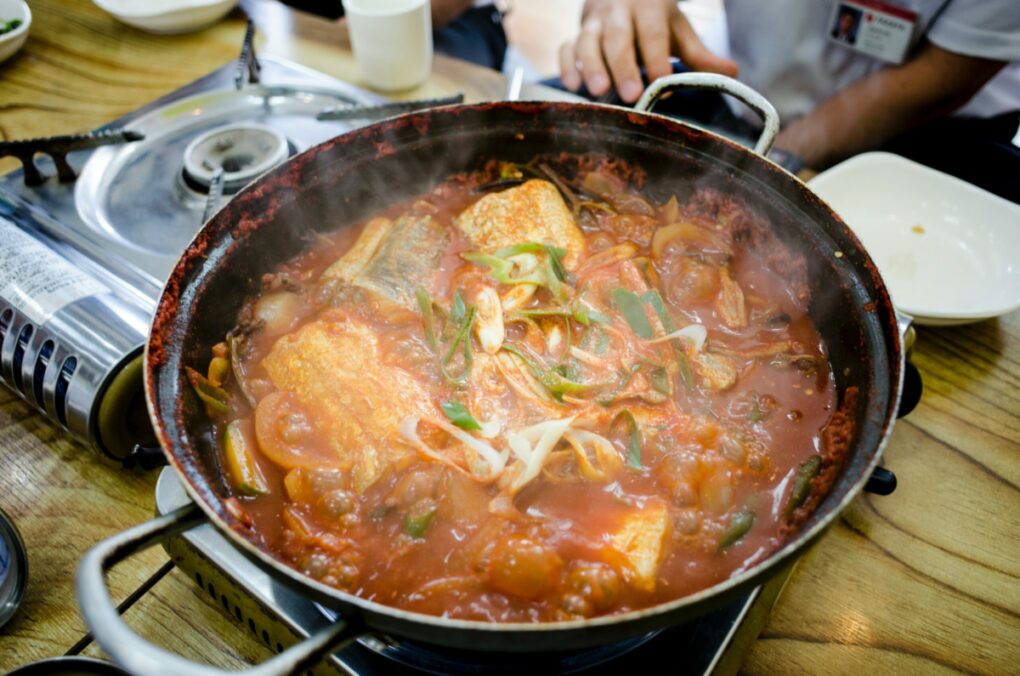
Galchi-jorim is a delicious and spicy Korean fish soup that is sure to warm you up on a chilly day, even in the spring or summer. This flavorful dish is made with fresh hairtail fish, which is braised in a spicy broth until it is tender and flavorful.
The soup is typically served with rice and a variety of side dishes, making it a satisfying meal that is perfect for any time of day. This spicy fish soup is packed with flavor and nutrients that will leave you feeling satisfied and nourished, so if you see it on a menu, especially on a cold day, consider giving it a try.
Galchi-jorim is a great option for anyone looking for a gut-friendly and low-calorie meal. Not only is it packed with protein and healthy fats, but it's also low in carbs.
Bean Sprout Soup
Bean sprout soup, or kongnamul guk, is a popular Korean dish that's both nutritious and light. This soup is made with bean sprouts, fresh radishes, and other vegetables, making it a perfect dish for those who are looking for a healthy Korean food option.
It's low in calories and high in fiber, making it a great addition to any diet. This is also rich in vitamins and minerals, including vitamin C, vitamin K, and iron. Korean radish, on the other hand, is a good source of vitamin C, potassium, and fiber.
🍚 Delicious Rice Dishes
Bibimbap (Mixed Veggies With Rice)
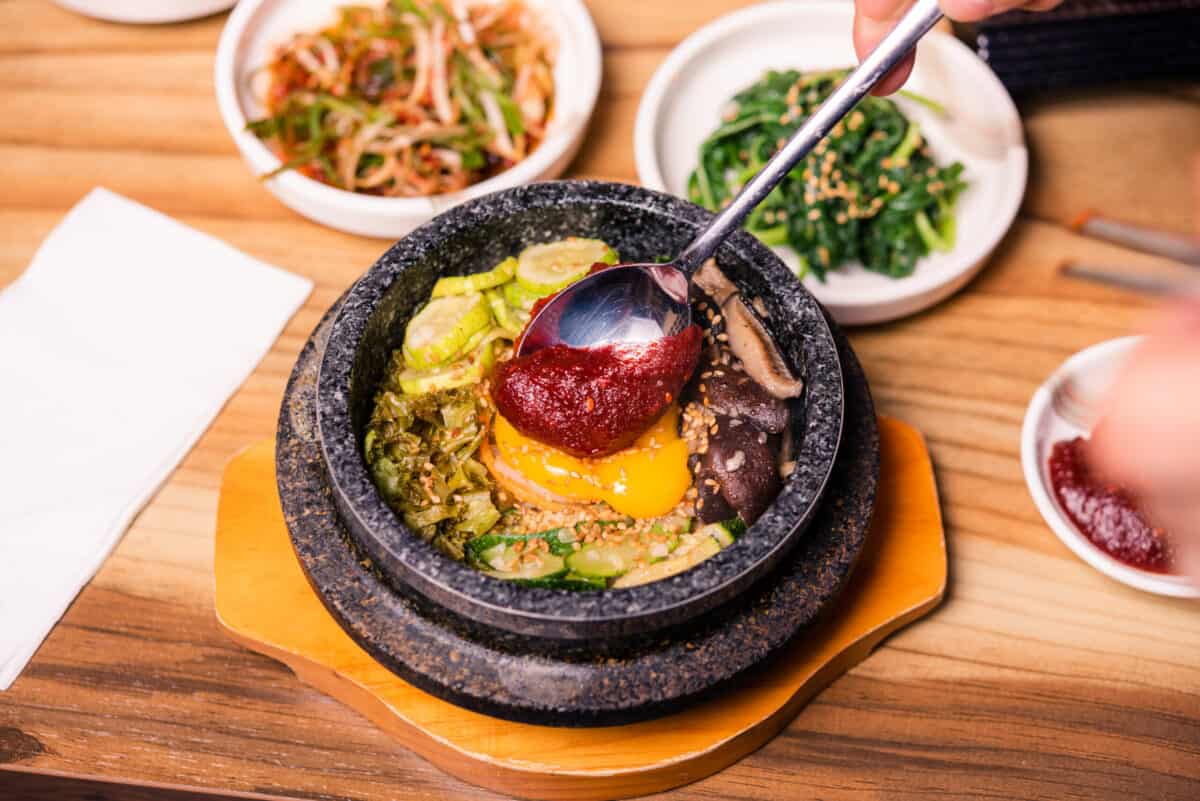
Bibimbap is one of those classic healthy Korean dishes that fill you up in no time and are delicious, to boot. It's generally made up of a bowl of rice topped with various julienned vegetables, slivers of meat, and a soft fried egg.
The dish is often served with a spicy sauce made with gochujang, which adds a flavorful kick to the dish. One of the best things about homemade bibimbap is that it's incredibly versatile; you can use any vegetables you like, making it a great way to use up any leftover veggies in your fridge. Some popular vegetables to include are:
- Carrots
- Spinach
- Bean sprouts
- Zucchini
- Shiitake mushrooms
- Cucumber
To make bibimbap even healthier, you can swap out the white rice for brown rice or quinoa. Brown rice is a great source of fiber, which can help keep your digestive system healthy, though quinoa is also a great choice, as it's high in complete proteins (meaning they contain all nine essential amino acids).
If you're looking to cut back on calories, you can also skip the meat and use veggies and eggs only. This makes for a delicious and filling vegetarian Korean meal that is packed with nutrients.
Kimbap (Korean Seaweed Rice Rolls)
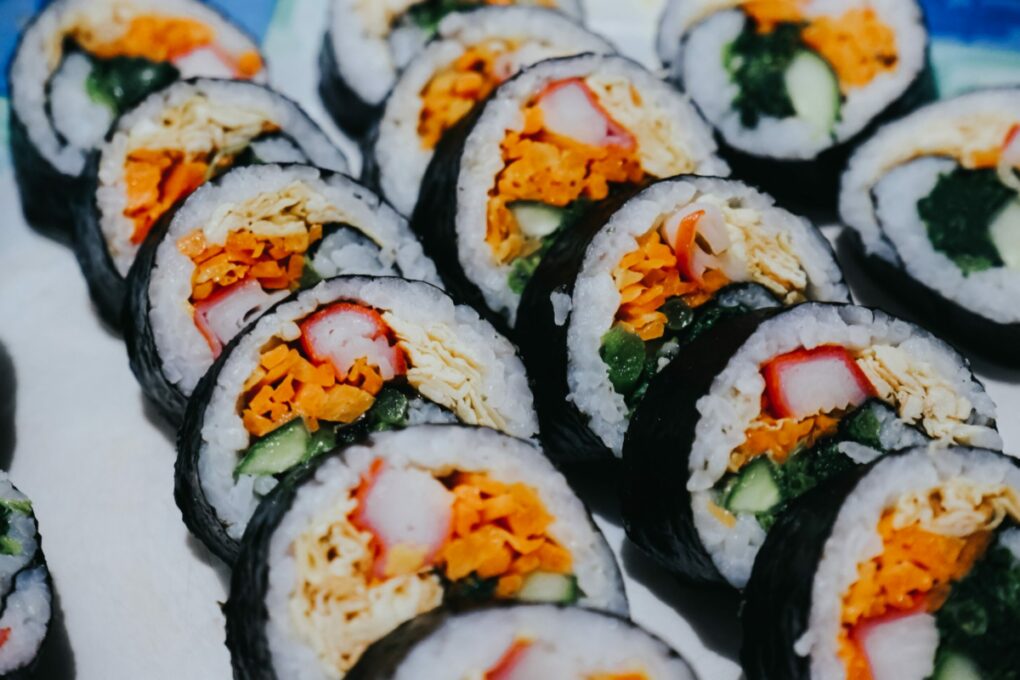
Similar to sushi, kimbap is a remarkably portable and convenient snack enjoyed by people of all ages in Korea and now also around the world. These Korean seaweed rice rolls are packed with flavor and nutrients, making them a great choice for anyone looking to eat healthier.
Kimbap is made by rolling cooked rice, vegetables, and sometimes meat or seafood in sheets of roasted seaweed. The result is a tasty and satisfying snack that's perfect for any time of day, and when made at home, can be customized to your dietary needs.
You can fill your rolls with whatever ingredients you like, making it easy to tailor them to your personal taste preferences. Some popular ingredients you can include are:
- Carrots
- Cucumber
- Spinach
- Avocado
- Hot dogs
- Crab meat
- Tuna
- Ham
In addition to being delicious, kimbap is also a healthy choice. The seaweed used to make the rolls is rich in vitamins and minerals, including iodine, calcium, and iron. The rice provides energy and fiber, while the vegetables add vitamins and antioxidants.
If you're looking for a low-calorie snack, kimbap is a great choice: a typical roll contains around 200-300 calories, depending on the ingredients used.
Jeonbokjuk (Abalone Porridge)
If you are looking for a comforting and nourishing meal, jeonbokjuk is a perfect choice. This Korean porridge is made with abalone, a type of shellfish that is rich in protein, vitamins, and minerals. The abalone is first cleaned and then boiled with rice until it becomes a thick porridge.
The dish is often garnished with chopped scallions, sesame oil, and toasted sesame seeds for added flavor and texture. Jeonbokjuk is a popular dish in Korea, especially during cold winter months, as it is believed to have warming properties and can be quite filling.
Hoe Deopbap (Korean Sashimi Rice Bowl)
With its vibrant colors and bold flavors, hoe deopbap is a dish that is as beautiful as it is delicious. This health food from Korea is a rice bowl topped with fresh sashimi and vegetables, making it a light and nutritious meal.
This Korean sashimi bowl is a great source of protein and healthy fats, making it a perfect meal for those looking to maintain a healthy diet. The sashimi used in this dish is typically raw fish, which is high in omega-3 fatty acids and low in calories. Plus the veggies used in the bowl are packed with vitamins and minerals.
Kimchi Fried Rice
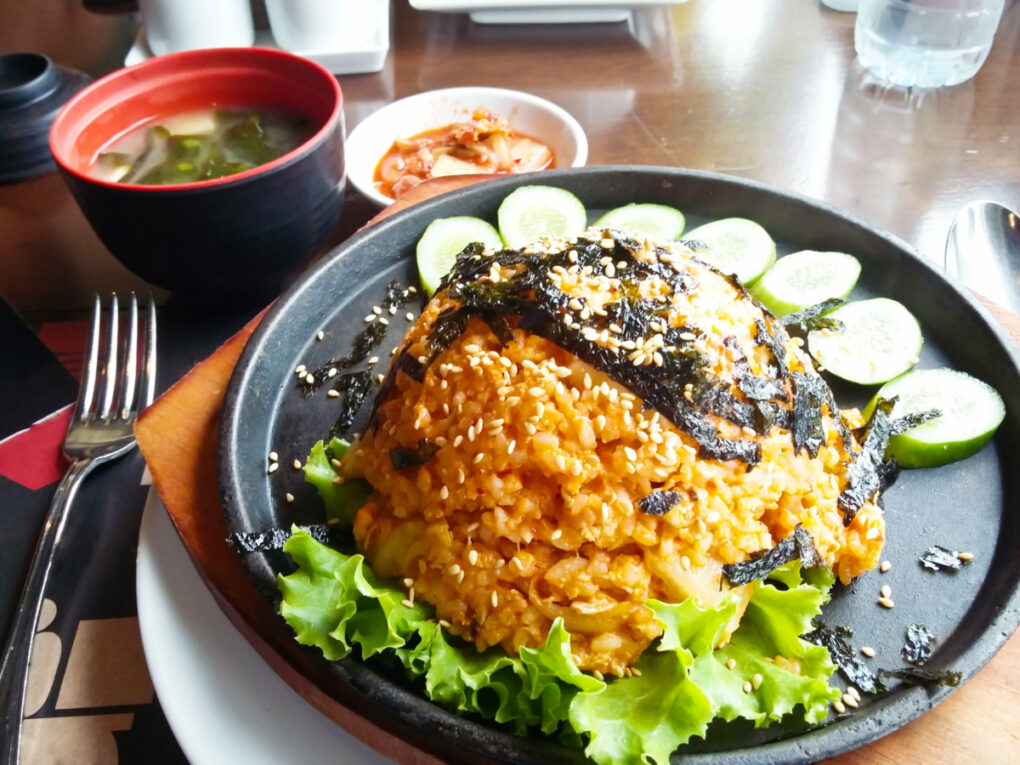
If you're looking for a quick and easy meal that's both gut-friendly and low-cal, look no further than kimchi fried rice. This classic Korean dish is a great way to use up leftover rice and add some probiotics to your diet.
Not only is kimchi fried rice delicious and easy to make, but it's also packed with gut-friendly probiotics thanks to the fermented kimchi. Here's a quick breakdown of the nutritional benefits of each ingredient in kimchi fried rice:
- Kimchi: Contains probiotics that can help improve digestion and boost the immune system.
- Brown rice: Contains fiber, vitamins, and minerals that can help regulate blood sugar and lower the risk of heart disease.
- Eggs: A good source of protein and healthy fats that can help keep you full and satisfied.
- Chicken: Another good source of protein that can help support muscle growth and repair.
- Soy sauce: Contains antioxidants and may help lower cholesterol levels.
- Sesame oil: Contains healthy fats and antioxidants that can help reduce inflammation in the body.
🥘 Nutritious Korean Viands
JjimDak (Korean Spicy Chicken)
Jjimdak is a popular Korean dish that is known for its spicy and savory flavors. This Korean dish is made with chicken, vegetables, and a spicy sauce that will satisfy your taste buds. It’s a great option for a healthy Korean meal, as it is low in calories and high in protein.
The chicken provides a good source of lean protein, while the vegetables add fiber and nutrients. Plus, the spicy sauce is made with gochujang, which has been shown to have anti-inflammatory properties and may help improve gut health.
Bulgogi
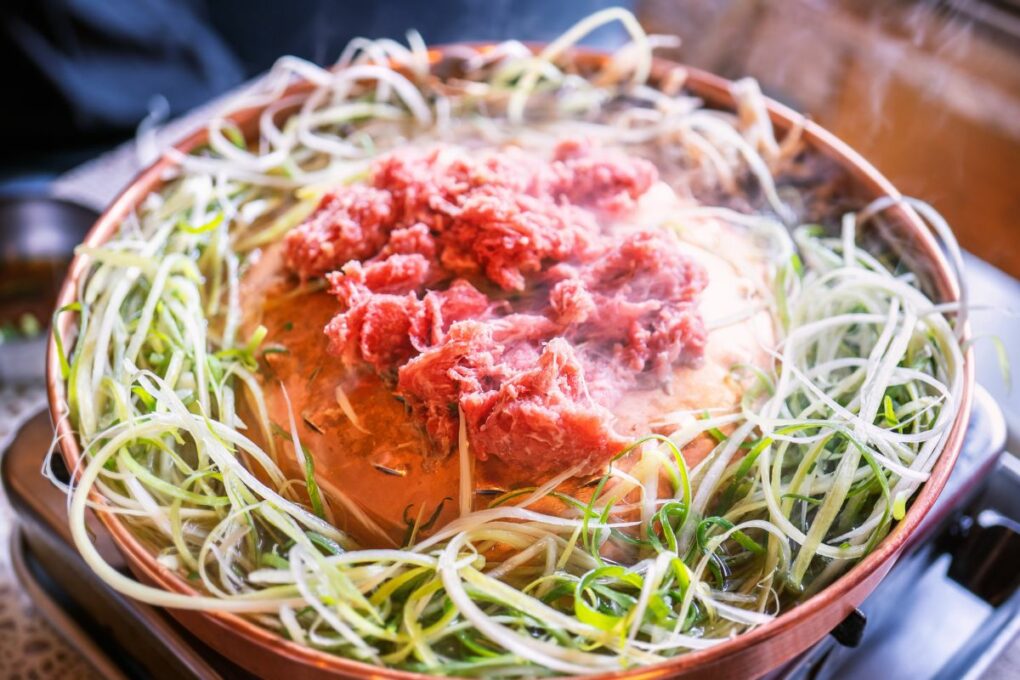
If you're looking for some flavorful and healthy Korean dishes, bulgogi is a great option for Korean BBQ. Its recipe is made with thinly sliced beef marinated in a mixture of soy sauce, sugar, sesame oil, garlic, and other seasonings. This meal is often grilled but can also be pan-fried or stir-fried.
Bulgogi is a low-calorie dish that is high in protein and gut-friendly ingredients such as carrots, bean sprouts, and spinach. It's also a great source of vitamins and minerals, including iron, zinc, and vitamin B12.
To make bulgogi even healthier, try using lean cuts of beef or substituting with chicken or tofu. Here are some tips for making delicious and healthy bulgogi:
- Use a lean cut of beef, such as sirloin or flank steak, to reduce the calorie count.
- Marinate the beef for at least 30 minutes to allow the flavors to develop.
- Serve with a side of steamed vegetables or a salad to add more fiber and nutrients to your meal.
- Use low-sodium soy sauce to reduce the overall sodium content of the dish.
Dakdoritang
Dakdoritang is a hearty Korean chicken stew that is perfect for cold winter nights. It is made with chicken, potatoes, carrots, and other vegetables, and is simmered in a spicy, flavorful sauce. This dish is not only delicious, but it is also a healthy Korean food option that’s worth looking for if you visit the ROK.
Dakdoritang is a dish with a host of health benefits. It is a great source of protein, vitamins, and minerals. The chicken in the dish provides a good source of lean protein, while the vegetables add fiber, vitamins, and minerals. The spicy sauce, made with gochujang, is rich in probiotics that can help improve gut health.
Additionally, the vegetables in dakdoritang provide a good source of vitamins and minerals, including vitamin C, vitamin A, and potassium.
Gyeranmari (Korean Omelet Rolls)
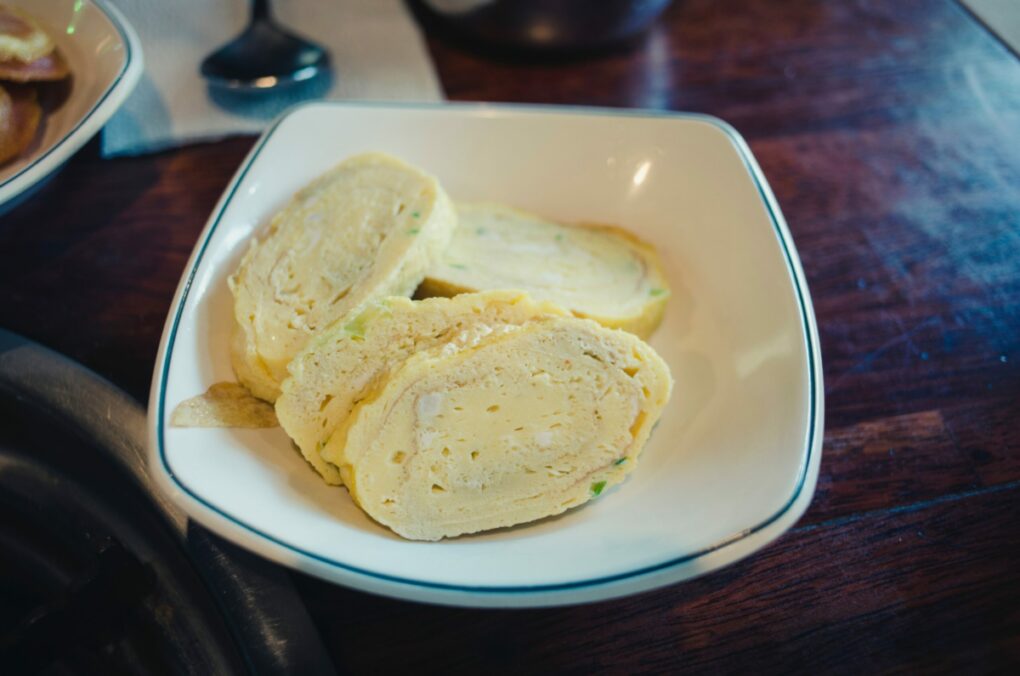
Gyeranmari, also known as Korean omelet rolls, is a delicious and easy-to-make dish that is perfect for breakfast or as a snack. These Korean omelet rolls are made with eggs and various vegetables, making them a nutritious and low-calorie option.
The eggs provide protein, while the vegetables provide fiber and various vitamins and minerals, but here are some of my personal tips to make your gyeranmari even healthier.
- Use organic and pasture-raised eggs for added nutrition.
- Add more vegetables like spinach or mushrooms for extra fiber and nutrients.
- Use a non-stick pan to reduce the amount of oil needed for cooking.
- Serve with a side of kimchi for added probiotics.
🙋🏼♀️ Frequently Asked Questions
Healthy options in Korean cuisine include dishes like bibimbap, a mixed rice dish with an assortment of vegetables, lean protein, and a small amount of gochujang (chili pepper paste). Additionally, dishes like kimchi, a fermented vegetable side dish, and various types of soups and stews made with vegetables and lean proteins can be nutritious choices. Grilled or steamed dishes, such as grilled fish or bulgogi (marinated grilled beef), can also be part of a healthy Korean meal. It's important to note that portion sizes and overall balance of the meal also contribute to its healthfulness.
Korean food is generally considered to be healthy as it often features a variety of vegetables, lean proteins, and fermented foods. Many traditional Korean dishes incorporate a wide range of vegetables, such as kimchi, and use cooking methods like grilling, steaming, and boiling. However, it's important to note that the healthiness of any cuisine ultimately depends on the specific dishes and ingredients used, as well as individual dietary needs and preferences. Overall, when enjoyed in moderation and as part of a balanced diet, Korean food can be a nutritious and flavorful choice.
The basic Korean diet typically includes a variety of vegetables, rice, tofu, fermented foods such as kimchi, and a moderate amount of lean proteins such as fish and tofu. Meals are often accompanied by a range of side dishes known as banchan, which can include items like pickled vegetables, seaweed, and small amounts of meat. The diet also emphasizes the use of seasonings such as sesame oil, garlic, and ginger to enhance flavor. It's important to note that individual dietary preferences and regional variations can lead to different interpretations of the basic Korean diet.
Yes, rice is a staple food in Korean cuisine, and it is commonly consumed daily as a part of traditional meals. It often serves as the main source of carbohydrates and is a fundamental component of many Korean dishes. However, individual dietary habits may vary, and some Koreans may choose to consume other grains or substitute rice with alternatives based on personal preferences and dietary needs.
One of the healthiest Korean dishes is bibimbap, a mixed rice dish that typically includes an assortment of vegetables, lean protein such as beef or tofu, and a small amount of spicy gochujang (chili pepper paste). This dish provides a balance of carbohydrates, protein, and fiber from the vegetables, making it a nutritious and well-rounded meal option. Additionally, various types of clear soups and stews made with vegetables and lean proteins can also be considered healthy choices in Korean cuisine.
📖 Recipe

Healthy Korean Recipes
Equipment
- Wooden Spoon
- Pot
- Pan
- Chopping Board
- Knife
- Spatula
Ingredients
- Kongguksu (Soy Bean Noodles)
- Kalguksu (Knife Cut Noodles)
- Japchae (Korean Glass Noodles)
- Bukeoguk (Dried Pollock Soup)
- Sundaeguk (Blood Sausage Soup)
- Sundubu-jjigae (Spicy Tofu Soup)
- Galchi-jorim (Spicy Fish Soup)
- Bean Sprout Soup
- Kimbap (Korean Seaweed Rice Rolls)
- Jeonbokjuk (Abalone Porridge)
- Hoe Deopbap (Korean Sashimi Rice Bowl)
- Bibimbap
- Kimchi Fried Rice
- JjimDak (Korean Spicy Chicken)
- Bulgogi
- Dakdoritang
- Gyeranmari (Korean Omelet Rolls)
Instructions
- Choose a recipe that appeals to you.
- Gather the ingredients.
- Follow the instructions, then enjoy!

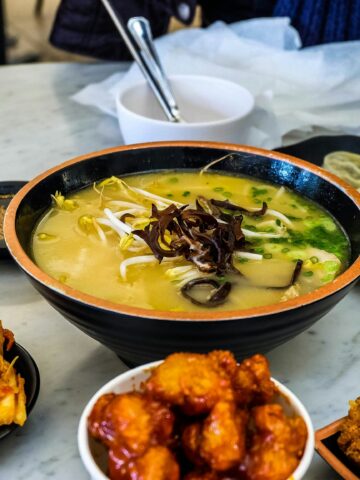

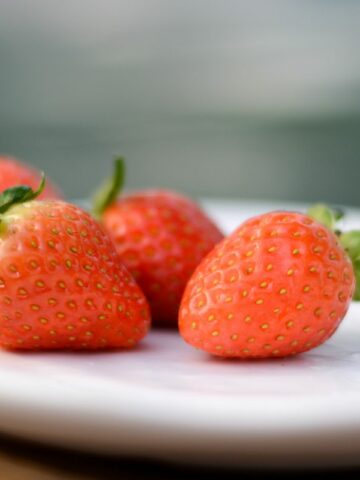
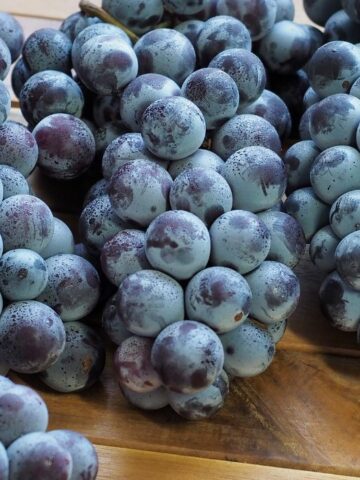
Comments
No Comments